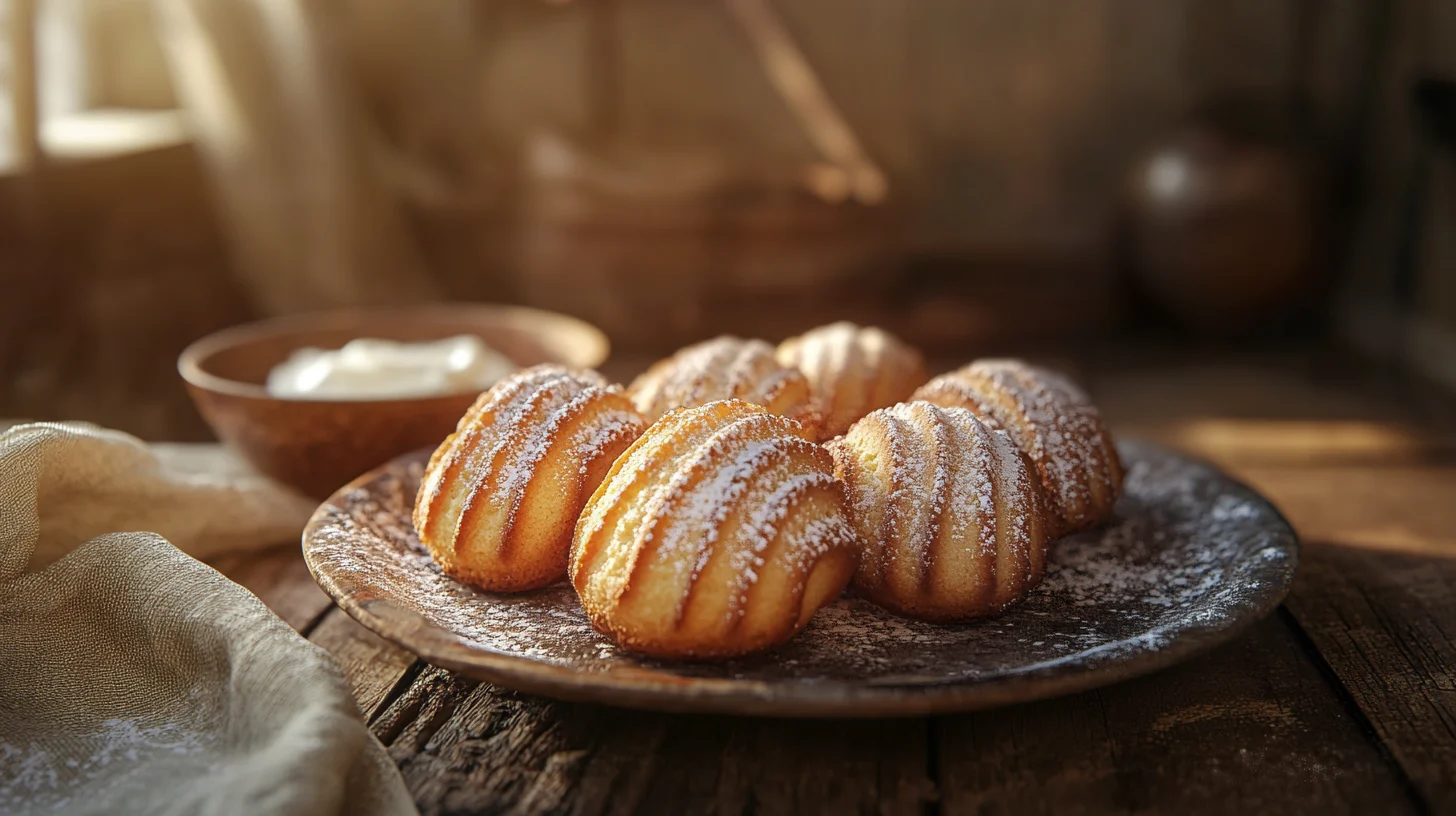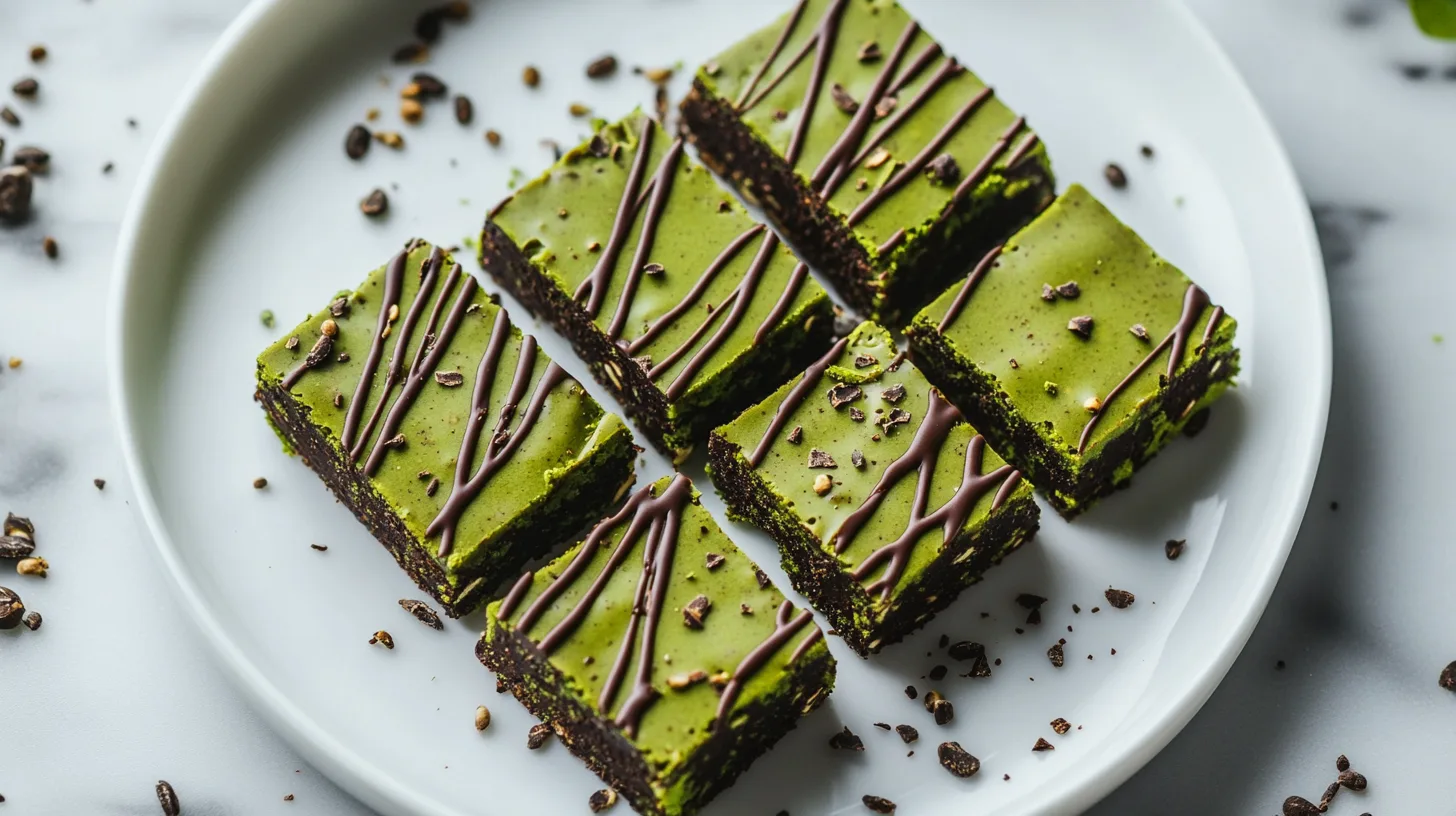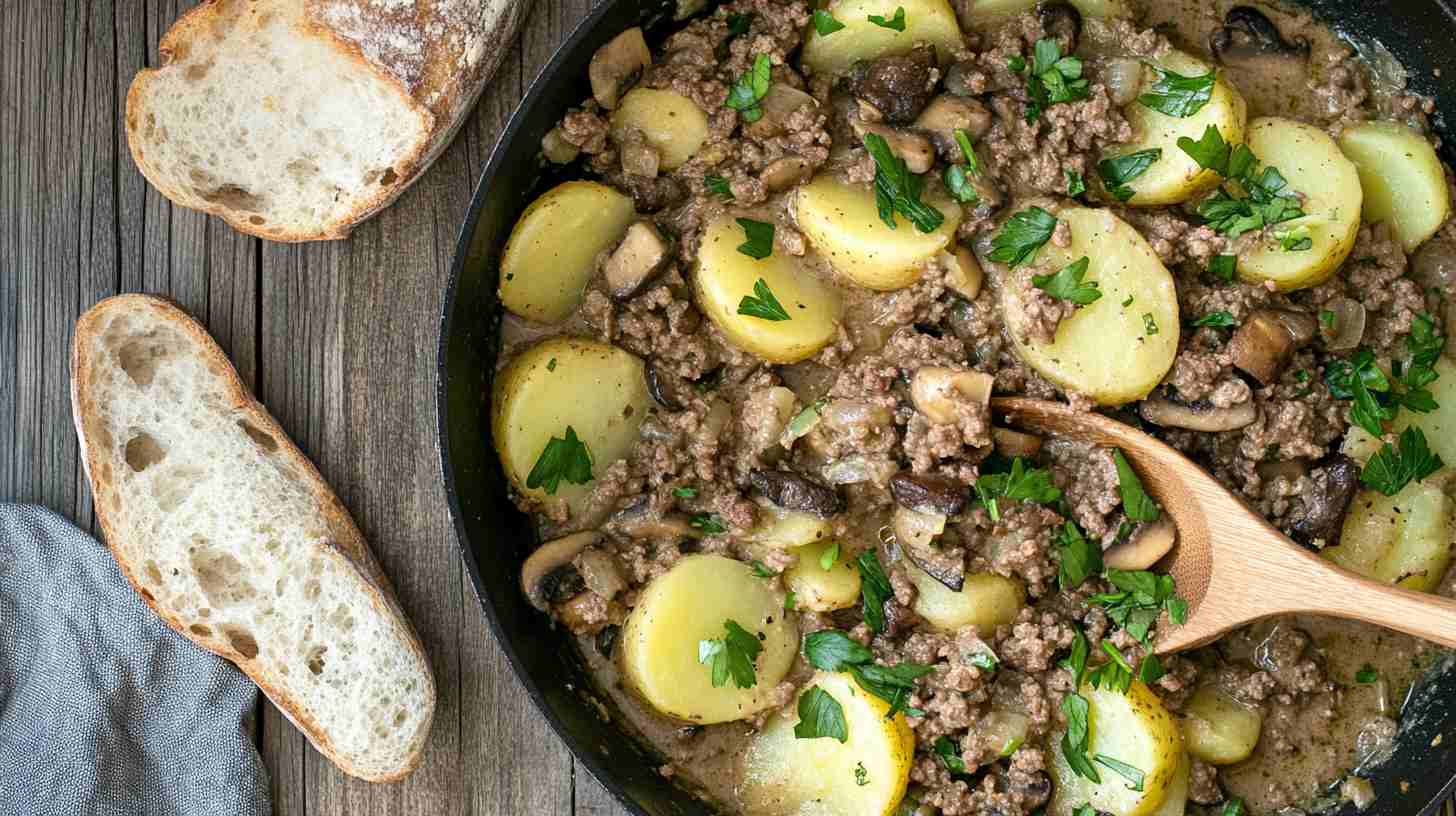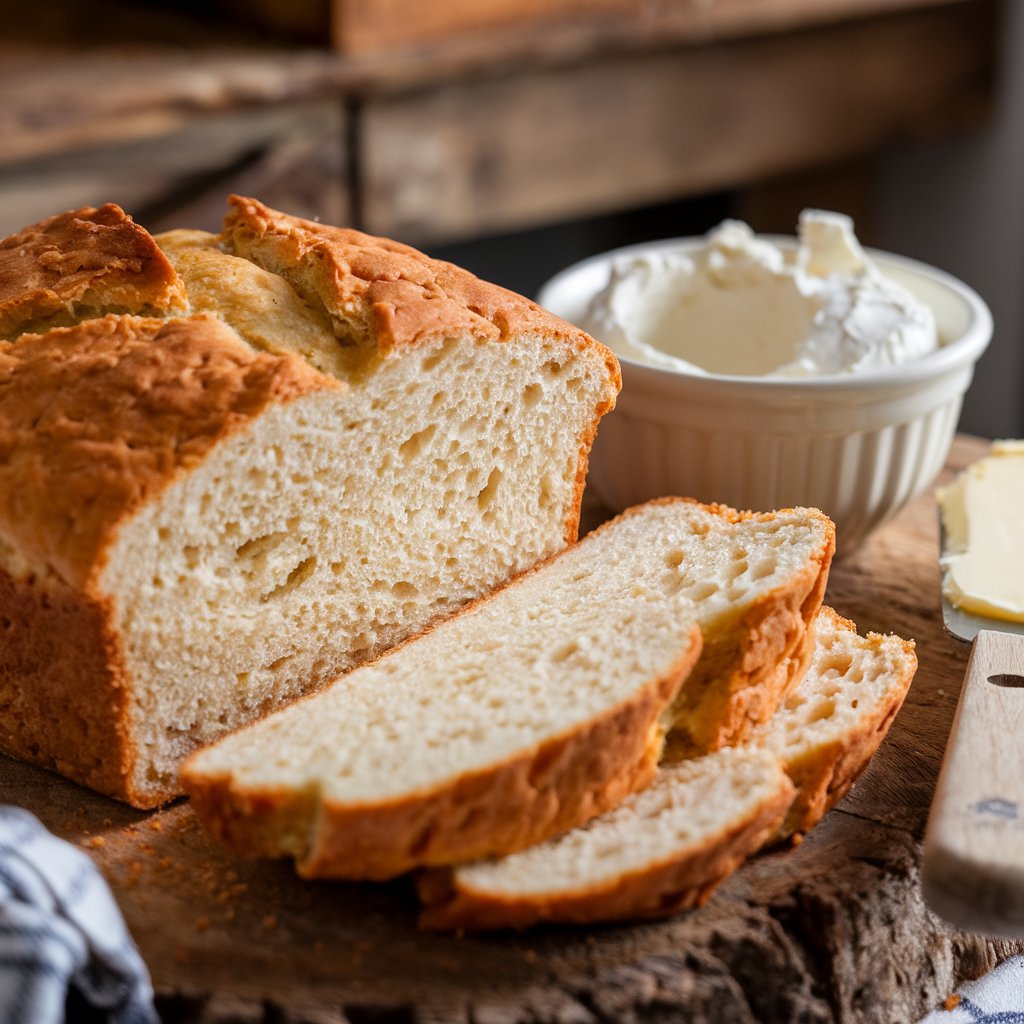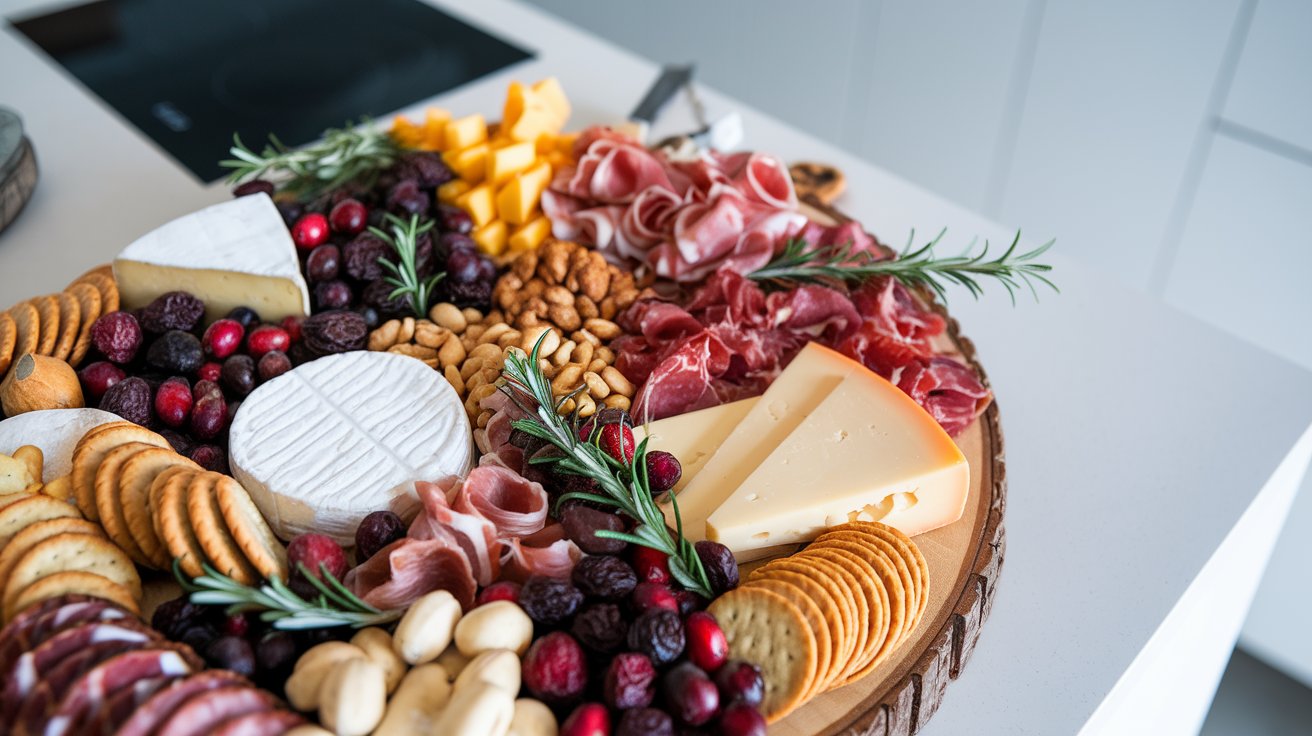With every bite of these buttery, golden madeleines, I’m transported to a cozy Parisian café, where the sweet aroma of freshly baked treats mingles with the chatter of locals enjoying their afternoon tea. This madeleine cookies recipe using cream adds a luxurious twist to the traditional French classic, creating soft and fluffy cookies that are perfect for any occasion. Madeleines are more than just a dessert; they are an experience steeped in French tradition and culinary elegance.
Today, we’re taking this classic treat and giving it a modern upgrade. By using cream in the batter, we elevate the traditional French madeleine recipe, creating soft, fluffy cookies with a rich, velvety texture. Perfect for breakfast, tea time, or as a decadent dessert, these cream-based madeleines are bound to become a favorite in your baking repertoire.
At Forum Recipes, our mission is to inspire joy in cooking and make even the most sophisticated recipes accessible to everyone. If you’ve ever wanted to combine the simplicity of everyday baking with the elegance of French pastries, this recipe is for you. Ready to master this delightful treat with a creamy twist? Let’s dive in!
The Charm of Madeleines: A French Classic
Madeleines are one of the most iconic treats in French baking, known for their distinctive shell-like shape and soft, sponge-like texture. Although they are often referred to as cookies, they sit somewhere between a cake and a cookie, offering the best of both worlds.
Historically, these delightful treats are said to have originated in the Lorraine region of France during the 18th century. Over time, they became a beloved dessert, gaining global recognition when French writer Marcel Proust immortalized them in his literary masterpiece, In Search of Lost Time. Because of this, madeleines are not just pastries; they evoke feelings of nostalgia and cultural richness.
What truly makes madeleines special, however, is their versatility. Whether you enjoy them fresh out of the oven with a steaming cup of tea or dress them up with glazes and fillings for special occasions, these little delicacies always rise to the occasion. For more inspiration on elegant desserts, don’t miss our guide on “Find inspiration for tea-time treats and sweet delights.”
The Secret Ingredient: Cream in Madeleine Cookies Recipe
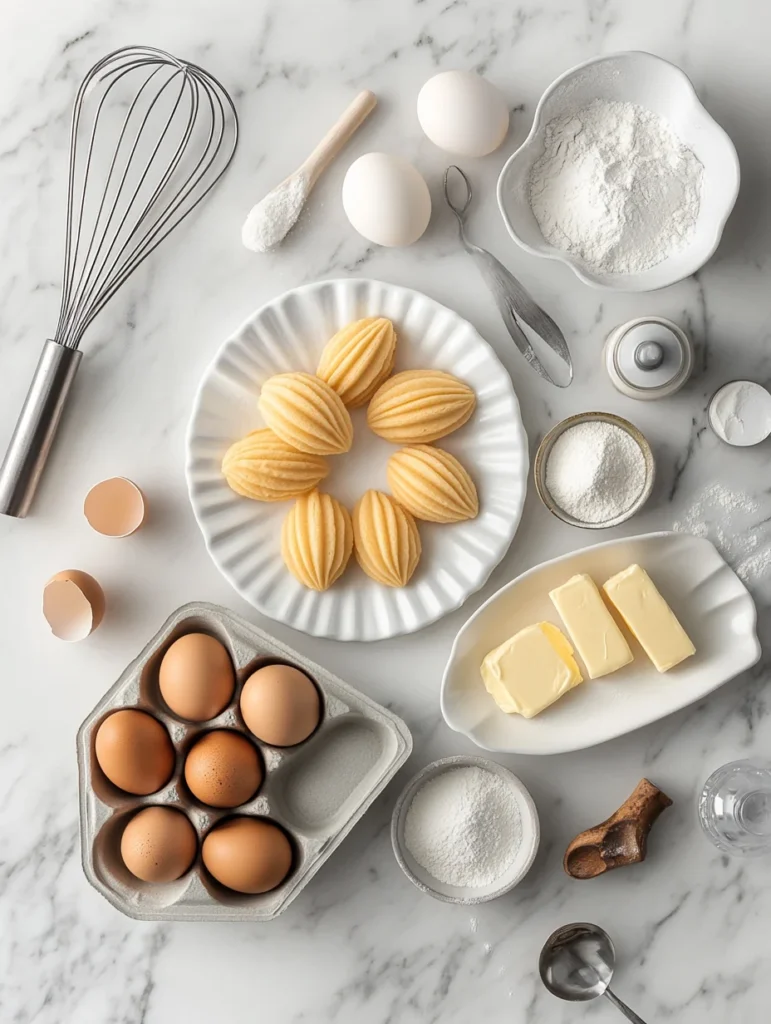
To make the perfect madeleine cookies recipe using cream, understanding the role of cream in baking is essential. The addition of cream transforms the texture of the traditional French madeleine batter, making it moist, rich, and incredibly velvety. Unlike traditional recipes that rely solely on butter for richness, cream enhances the flavor while giving the cookies a softer, fluffier crumb.
Moreover, cream acts as an excellent emulsifier, helping the ingredients blend seamlessly for a more uniform batter in this madeleine cookies recipe using cream. Depending on your preference, you can use heavy cream for a rich and smooth texture, sour cream for a slight tang, or even cream cheese for added density and flavor. This cream-based madeleine batter ensures soft and fluffy cookies every time. For a healthier variation, Greek yogurt can serve as a substitute, offering a similar creamy texture with less fat. By following this madeleine cookies recipe using cream, you’ll create cookies that are moist, rich, and absolutely irresistible.
If you’re wondering how to achieve the perfect balance, don’t worry! The cream-based batter is forgiving and works well with most flavor variations. As we move forward, you’ll see how this simple ingredient can truly elevate your baking game.
Essential Baking Tools for Perfect Madeleine Cookies
Before diving into the recipe, it’s important to ensure you have the right tools. While madeleines may seem fancy, you don’t need a professional kitchen setup to bake them successfully. Instead, a few key tools will help you achieve the perfect result.
First and foremost, a French madeleine baking pan is non-negotiable. These pans are specifically designed to create the scalloped shell shape that madeleines are known for. Look for non-stick pans to make removing the cookies a breeze. Additionally, a mixing bowl and whisk are essential for blending ingredients evenly.
To achieve that golden finish, a pastry brush is perfect for greasing the molds with melted butter. For added precision, a digital scale can ensure your ingredient measurements are accurate, while a fine mesh sieve will help dust powdered sugar onto your finished cookies for an elegant touch.
As you gather your tools, keep in mind that maintaining them properly is crucial. For example, avoid using abrasive sponges on your madeleine pans, as this can damage the non-stick surface. By taking care of your tools, you’ll ensure every baking session is as seamless as the first.
Ingredients for Cream-Based Madeleines
Now that you’re equipped with the right tools, it’s time to gather the ingredients. What makes this recipe truly special is the simplicity of the ingredients, which allows the creamy richness to shine.
Ingredients:
- 2 large eggs (room temperature)
- ½ cup granulated sugar
- 1 tsp vanilla extract
- 1 cup all-purpose flour
- ½ tsp baking powder
- ¼ tsp salt
- ½ cup unsalted butter (melted and cooled)
- ¼ cup heavy cream (or sour cream for a tangy variation)
- Optional: zest of 1 lemon, 2 tbsp cocoa powder, or a pinch of pumpkin spice
Substitutions and Add-ins:
For dietary preferences or flavor customization, consider these variations:
- Replace all-purpose flour with a gluten-free flour blend to create gluten-free madeleines.
- Swap heavy cream for coconut cream or almond milk cream for a dairy-free option.
- Enhance the flavor with almond extract, orange zest, or even lavender for a sophisticated twist.
By thoughtfully selecting high-quality ingredients, you’ll ensure that every bite of your madeleines is a little piece of perfection.
Step-by-Step Instructions for Creamy Madeleine Cookies Recipe
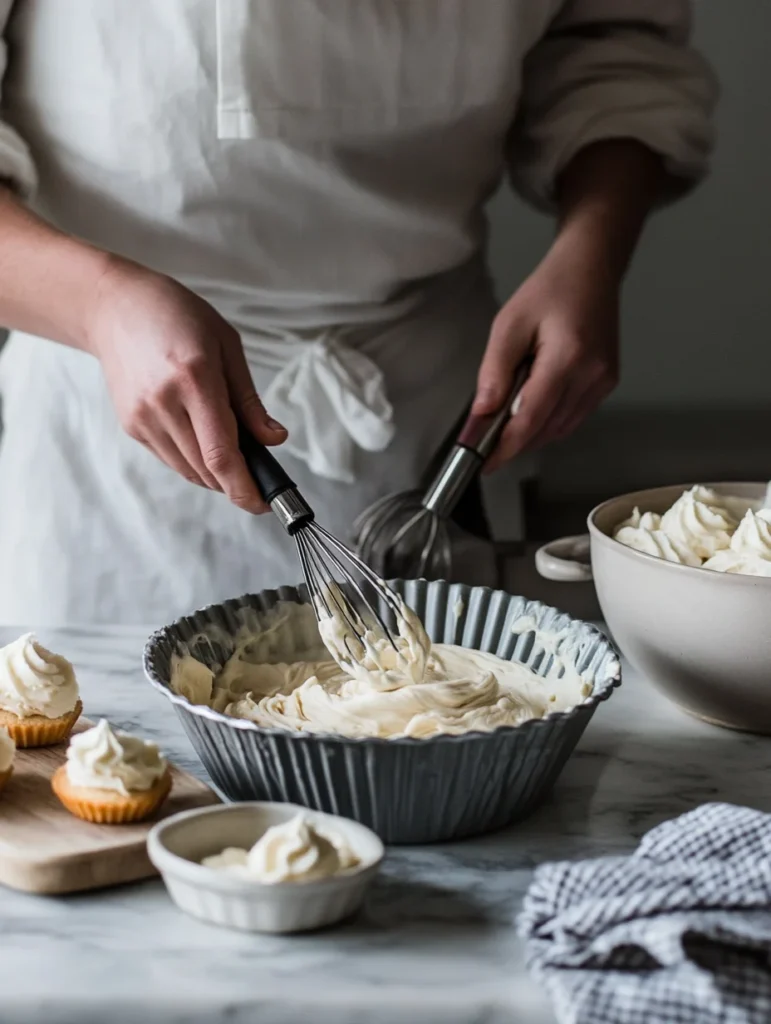
Here comes the most exciting part—making the madeleines! While the process might seem intricate at first glance, it’s surprisingly simple when broken down into clear steps.
- Prepare your pan: Begin by brushing the madeleine molds with melted butter, ensuring every groove is coated. Then, lightly dust them with flour to prevent sticking.
- Mix the wet ingredients: In a large bowl, whisk the eggs and sugar together until the mixture turns pale and fluffy. This step incorporates air into the batter, which is key for achieving light and airy madeleines.
- Add flavoring: Stir in the vanilla extract and optional add-ins like lemon zest or pumpkin spice to infuse the batter with extra flavor.
- Combine the dry ingredients: In a separate bowl, sift together the flour, baking powder, and salt. Gradually fold the dry ingredients into the egg mixture, taking care not to overmix.
- Incorporate cream and butter: Gently fold in the cream and melted butter, ensuring the batter is smooth and glossy.
- Chill the batter: Cover the bowl and refrigerate the batter for at least one hour. This step is crucial for developing the signature hump in the cookies during baking.
- Fill and bake: Preheat your oven to 375°F (190°C). Spoon or pipe the batter into the prepared molds, filling each cavity about ¾ full. Bake for 8-10 minutes or until the edges turn golden brown.
- Cool and serve: Once baked, let the madeleines cool in the pan for a few minutes before transferring them to a wire rack. For an elegant finish, dust them with powdered sugar.
For those who enjoy mastering the finer details of dessert making, don’t miss our guide on “Explore the art of crafting delicious desserts like our madeleine cookies.”
Perfecting Texture: Tips for Soft and Fluffy Madeleine Cookies
To ensure your madeleines turn out soft, fluffy, and picture-perfect every time, follow these tried-and-true tips:
- Chill the batter: Refrigerating the batter allows it to firm up, which helps create the signature hump.
- Don’t overmix: Overmixing can deflate the batter, resulting in dense cookies. Instead, fold the ingredients gently.
- Bake at high heat initially: Starting with a hot oven allows the cookies to rise quickly. If needed, reduce the heat midway to prevent overbrowning.
- Use fresh ingredients: The quality of your eggs, butter, and cream greatly influences the final texture.
With these techniques, you’ll achieve bakery-quality madeleines every time.
Flavor Variations and Add-Ons for Madeleine Cookies with Cream
One of the best parts about baking madeleines is experimenting with flavors. Here are a few ideas to inspire your next batch:
- Classic lemon: Add zest and a few drops of lemon extract for a bright, zesty flavor.
- Pumpkin spice: Incorporate pumpkin puree and spices like cinnamon and nutmeg for a seasonal twist.
- Caramel drizzle: Top the cookies with homemade caramel sauce for an indulgent dessert.
- Chocolate-dipped: Dip one end in melted chocolate and sprinkle with chopped nuts or sea salt.
By mixing and matching these variations, you can create madeleines that suit any occasion or preference.
Serving Suggestions: Enjoy Madeleine Cookies Beyond Tea Time
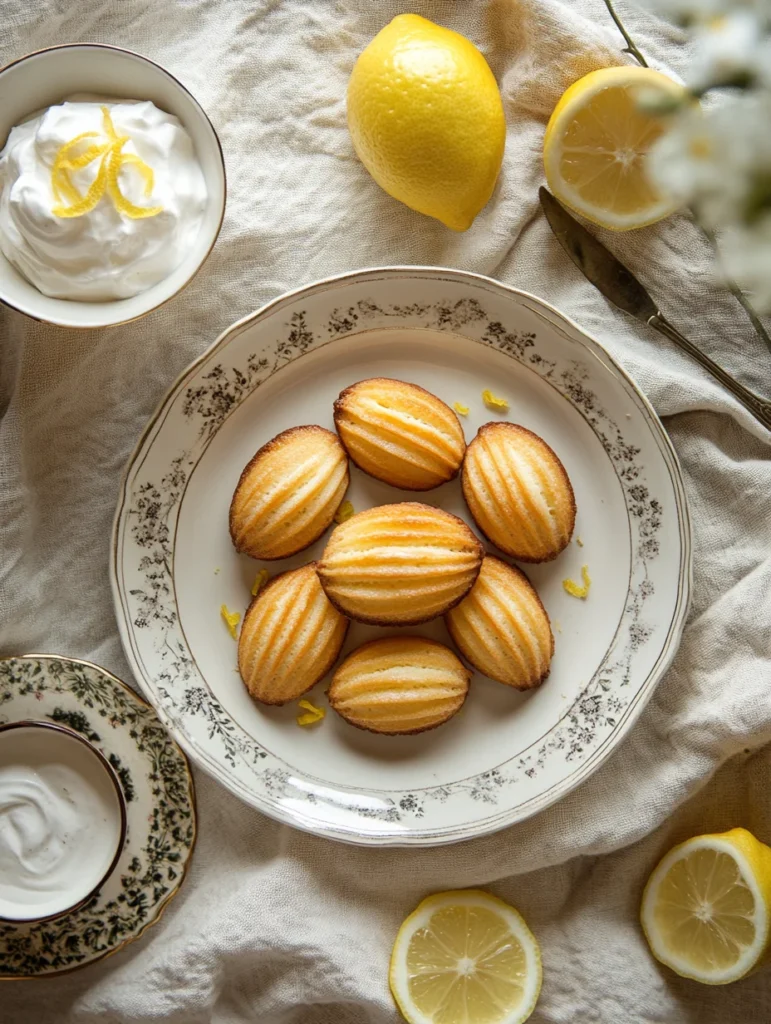
While madeleines are traditionally enjoyed with tea, they’re versatile enough for other occasions:
- Pair with coffee or hot chocolate for a cozy breakfast.
- Serve with whipped cream and fresh berries for a light dessert.
- Wrap them in decorative boxes as thoughtful gifts for friends and family.
Storage and Shelf Life Tips for Cream-Based Madeleine Cookies
To keep your madeleines fresh and delicious:
- Store them in an airtight container at room temperature for up to three days.
- Freeze them by layering with parchment paper in a sealed bag for up to two months.
- Reheat in the oven at 300°F (150°C) for 5 minutes to restore their freshly baked texture.
FAQ’s
How do you keep madeleines moist?
To keep madeleines moist, start by ensuring you use high-quality ingredients like fresh eggs and butter. Adding cream or sour cream to the batter can also help retain moisture, as these ingredients provide richness and softness. Additionally, avoid overbaking—this is key. When the edges turn golden brown, it’s time to take them out of the oven. Once cooled, store your madeleines in an airtight container to prevent them from drying out. If you need to store them for longer, freeze them with layers of parchment paper and reheat gently to restore their softness.
Why are madeleine cookies so good?
Madeleines are beloved for their unique combination of flavors and textures. They are buttery and soft, with just the right amount of sweetness. The addition of cream elevates their richness, while their distinctive scalloped shape adds an element of elegance. Whether enjoyed plain, dusted with powdered sugar, or dipped in chocolate, madeleines are a versatile treat. Plus, their nostalgic association with French culture and literature adds an irresistible charm that makes every bite feel special.
Why are my madeleines dry?
Dry madeleines are usually the result of overbaking or an incorrect ratio of ingredients. To avoid this, carefully measure your ingredients and follow the recipe instructions. For instance, too much flour or not enough butter can result in dryness. Similarly, baking the cookies too long can cause them to lose moisture. A quick tip: always preheat your oven and check your cookies a minute or two before the suggested baking time to ensure they remain moist and tender.
How are madeleines different from cakes?
While madeleines share some similarities with sponge cakes due to their light texture, they are distinct in several ways. First, their batter is typically richer, often incorporating melted butter and, in this recipe, cream for added moistness. Second, they are baked in unique shell-shaped molds, giving them their signature appearance. Finally, madeleines are often smaller, more delicate, and served as individual portions, making them ideal for tea time or snacking.
for more details check this article
How do the French eat madeleines?
In France, madeleines are typically enjoyed during afternoon tea or as a light breakfast treat. They are often paired with a hot beverage like coffee, tea, or even hot chocolate. Many French families dust their madeleines with powdered sugar or dip them into their drink for an extra burst of flavor. Sometimes, they are served plain, allowing the buttery richness to shine. Their versatility makes them suitable for both casual and formal occasions.
What is the difference between financiers and madeleines?
Although both are traditional French pastries, financiers and madeleines differ in ingredients, texture, and shape. Madeleines are sponge-like, light, and typically baked with eggs, butter, and flour in shell-shaped molds. Financiers, on the other hand, are denser, richer, and made with almond flour and browned butter, giving them a nutty flavor. They are rectangular in shape, resembling small gold bars, which is where their name comes from. Both are delicious, but madeleines are more delicate and airy, while financiers are hearty and flavorful.
Conclusion
With their rich history, versatile flavors, and elegant presentation, cream-based madeleines are a treat worth mastering. Whether you’re enjoying them at breakfast, tea time, or as an after-dinner dessert, these little cookies are guaranteed to impress. So why wait? Gather your ingredients, fire up the oven, and let the magic of madeleines transform your kitchen into a Parisian café.
Try the recipe today and share your creations with us! Subscribe to Forum Recipes for more inspiring content, and don’t forget to explore our French inspiration.

